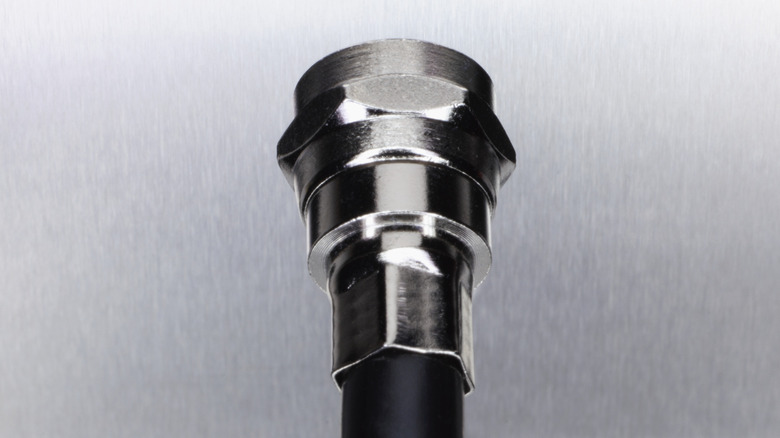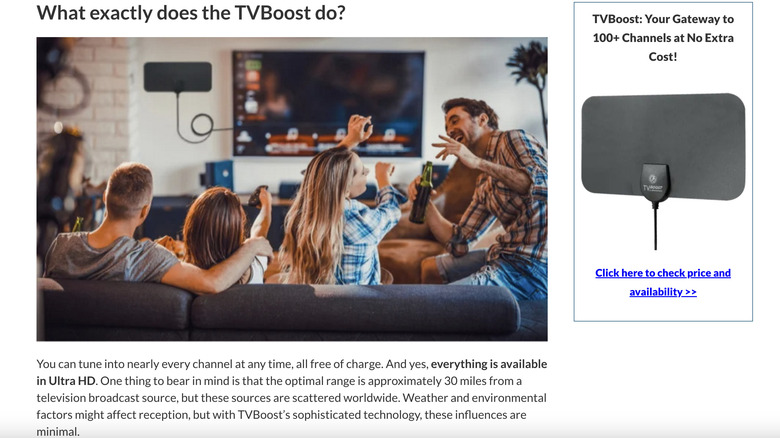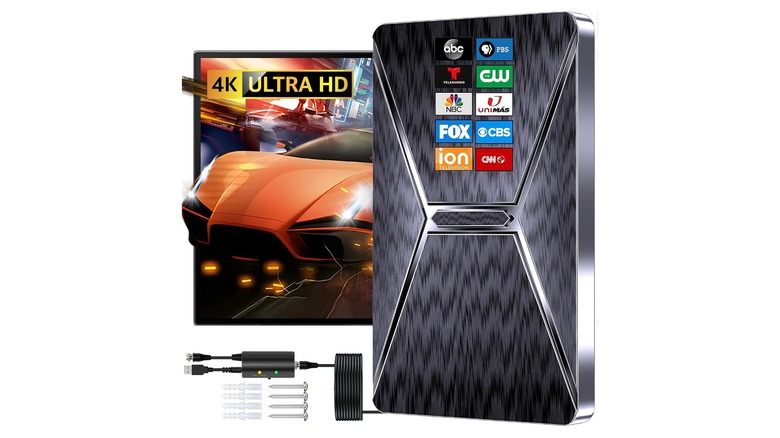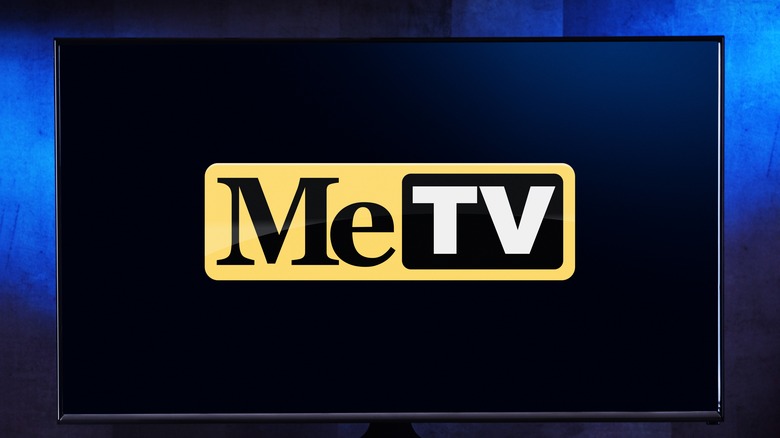What Is TVBoost And Does It Really Work?
We may receive a commission on purchases made from links.
It sounds great on paper: An inexpensive, unobtrusive indoor TV antenna that can easily pick up over 100 channels, "Engineered by a NASA professional utilizing military technology." all in beautiful 4K Ultra HD resolution (For reasons that should become obvious, we're not linking the official website for this product.) That's the main selling point of the TVBoost, also known as the EcoTV HD on the storefront that its website links to — which sells for $39.99 each or less if you buy at least three of them. If we're to believe the TVBoost home page, it's "the most dependable and advanced antenna on the market today."
That sounds great, right? Not enough consumers take advantage of over-the-air TV these days, so maybe the people behind the TVBoost — or EcoTV HD — are onto something. It's not like the pictures of it on the official website look much different from antennas that you might have caught out of the corner of your eye while browsing in an electronics store like Best Buy. However, though it's absolutely true that the average TV watcher can get a lot more out of an over the air antenna than they might expect, TVBoost/EcoTV HD is not exactly the answer. As someone who's spent lots of time trying to find the best indoor antenna since trying to get the most out of a hand-me-down TV as a child, let's take a look at what exactly is going on here and why other antennas are better choices.
Does TVBoost work as advertised?
A few things about TVBoost/EcoTV HD are pretty trivial to prove false. The official website claims it "grants you access to over 100 channels entirely free and within the confines of the law." Though that's theoretically possible, most people aren't living within the broadcast area of enough stations to receive 100 channels. The promotional copy further claims that "it permits you to view nearly any channel, movie, or show free of charge, without any subscriptions and in complete compliance with the law," which is obviously not the case because plenty of those are only available via cable, satellite, or cable replacement streaming services.
Perhaps more deceptively, the TVBoost website claims that all you need to do is "connect TVBoost to any of your TVs or monitors" with "all required cables are included in the package." On its face, this is explicitly false because the main thing that distinguishes a TV from a monitor is that a TV has a tuner and a monitor does not. Monitors also don't have the required coax input. To use an antenna with a monitor, you need to run an external TV tuner box between them. From there, the copy gets weirder, claiming cable companies are required by law to offer parallel, free over the air signals of all channels, which is untrue. The website also claims "everything is available in Ultra HD" when there are not yet any American broadcast 4K channels.
TVBoost is far from alone in being sold like this
TVBoost or EcoTV HD or whatever it's called is far from the only "scamtenna" that's promoted this way online. If anything, it might not even be the most egregious of the lot. That doesn't make it good, mind you, but it lacks some of the more ridiculous claims that are made to hype up some of its rivals. To its minimal credit, the copy for the TVBoost at least makes it perfectly clear that the ideal range is approximately 30 miles from a transmitter, while numerous scamtennas available online tout ridiculous ranges like hundreds or even thousands of miles. That's damning it with faint praise, though, as you would hope that no antenna claims to have a range of hundreds of miles or more.
Its competitors add claims about pulling in 4K or 8K resolution channels (the former is still in its early stages while the latter is not a thing) as well as a slew of network logos representing the channels that the manufacturers and resellers claim the antennas can pull in. Sometimes, these listings, which are all over sites with large third-party seller networks like Amazon, are relatively honest about what networks they can pick up, only using logos for those that broadcast over the air. Sometimes, though, they outright lie and include networks like HBO, Nickelodeon, or Fox News that are only available via cable, satellite, or cable replacement streaming services.
Why are scam antennas so common?
The best answer to why there is such an overwhelming glut of antennas sold in such a dishonest way is probably that awareness of what over the air digital television has to offer in the United States is not particularly good. Granted, I remember seeing ads for antennas for sale via mail order in the '90s with misleading copy, but that was never this common. It usually involved antennas shaped like a satellite dish to exploit confusion over the various different kinds of satellite dishes on the market at a time when it was a lot easier to find a lot of interesting satellite content in the clear without encryption. Now, though, the issue seems to be that, simply, most people have no idea what the capabilities of the ATSC standard are.
There are two big benefits that came with the transition to digital: HD picture quality and the ability to have multiple sub-channels piggyback on the main channel. These usually run programming from smaller networks that cropped up to fill the void. What this means is that a lot more channels are available to someone who can get a good quality signal than would have been available over analog TV or without the addition of sub-channels, but this isn't particularly well-known. In New York City, for example, there are multiple stations with four or more subchannels. Bending the truth about the surprising breadth of free channels makes it easier for scamtennas to thrive.



